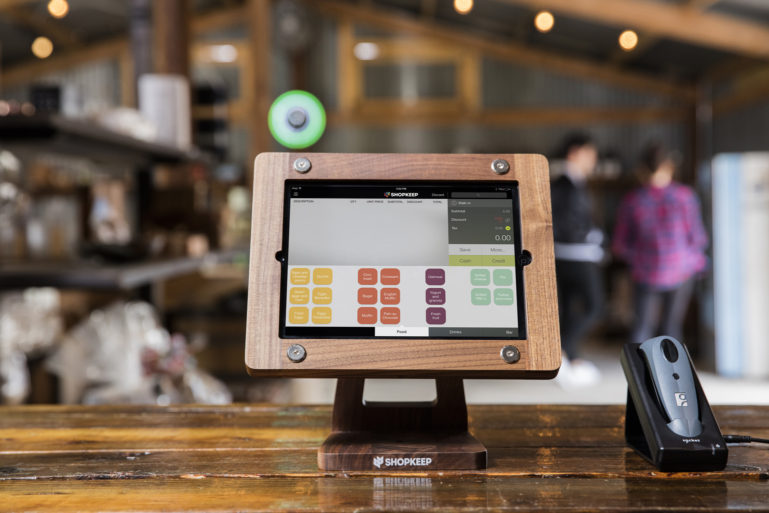
Point of Sale Definitions: The Lingo You Need to Know
Are you in the process of choosing a POS system but feel lost in the jargon? Wish you had a better grasp on point of sale definitions?
Since nothing should ever stand in the way of adopting new technology to future-proof your business and increase sales, we’ve pulled from our ShopKeep Glossary a list of terms and point of sale definitions we think are helpful to anyone on the hunt for POS software.
But before we launch into a list of technical terms, let’s makes sure that everyone is on the same page as to the difference between cloud-based POS software and POS systems.
Cloud-based POS or point of sale software is web-based transaction and inventory management software that allows business owners to complete credit and cash transactions, run reports to help analyze sales, and monitor inventory. A POS system, however, is the combination of the hardware — such as iPads, scanner, and printers — that are used to run POS software itself.
Now that you are clear on the definition of a point of sale system, we can get started! For your reading reference, all terms are listed in alphabetical order, not the order of importance or category.
Analytics Dashboard
Found in the owner-facing interface of POS software, it’s the summary of all register activity for a given date or date range.
Apple Pay
Apple’s technology that allows customers to pay at the register with their iPhones. As you’ve heard from us many a time before, don’t prefer, but demand that the POS system you invest in allows you to accept mobile payments such as Apple Pay.
Assigned Cost
The cost given to an untracked inventory item.
Beta
Software in the final stages of development. Periodically, when your POS system provider launches new software, it will be released in beta versions.
Bulk Management
The ability to add, delete, and/or edit multiple inventory items, or customers at once, using spreadsheet templates.
Category
A specific subgroup within a department, e.g. Food, Merchandise.
Closing Amount
Total amount of cash in the drawer at the close of a shift.
Control Panel
Menu of a register application to access cashier and manager functions.
Cost (Inventory)
How much it costs your business to purchase an item. Cost of inventory should be reflected in your POS system’s dashboard.
Customer List
Customer lists store customer information and keep track of customer purchases. They are especially useful when sending email receipts or for marketing purposes.

Department
General grouping for items. Used for organization, reporting, and ticket printing.
Item Description
The unique name for a sale item, as it appears on the register app and receipts used for bulk management.
Diagnostics
Information found in an iPad register app. It will display system status and everything on your register from connection status to devices plugged in.
Liability
An item pending redemption, such as a gift card.
Manager Code
An employee code that allows for manager access at the register.
Margin
The percentage of revenue left after cost and discounts.
Marketing Dashboard
Analytics, shown in your point of sale system’s dashboard such as customer growth and email receipt interactions.
Merge Checks
The ability to combine multiple checks into one larger check.

Modifiers
Additions or special requests added to an item to make it more distinguishable. An example of this would be a particular wine that comes in both a half bottle and a full bottle. The modifier being the size.
Discounts
The ability to create and manage custom discounts, such as those given to an employee or student.
Net Sales
Sales Total, minus returns Total, and minus Discounts. This number is often found in your point of sale system’s sales dashboard.
Non-Cash Gratuity
An employee’s credit card tips that may be removed from the cash drawer.
Non-Taxable Sales
The total dollar amount of items that are not taxed for a given time period.
Open Checks or Open Tab
A customer order that has not yet been processed and closed.
Open Shift
When a register is ready to run sales.
Opening Amount
The total amount of cash in the drawer at the beginning of the shift.
Operation Type
The classification of a transaction being performed (sale / return).
Order Trigger
When a low-quantity limit prompts items to appear on the reorder report.
Pay In
Any cash added to a till during an open shift, typically used for adding change.

Payout
Cash removed from drawer, typically used for tipping employees and small business purchases.
Print To
The option to select a printer for kitchen items to print, found when setting up ticket printers.
Raw Good
The materials needed to make up inventory items, e.g., flour, eggs, buns.
Receipt
A printout of items that a customer purchases. Can be a paper receipt or emailed receipt.
Receipt Number
Unique 19-digit transaction code used to track purchases and perform returns.
Receive Inventory
The action of adding units and update the cost of inventory within your POS system.
Recommended Order
The amount, determined by you, to be considered “fully stocked” at the business.
Register
For an iPad-based POS system, the iPad/iPads on which you are running the software.
Register Code
An employee code that gives users cashier or manager privileges.

Register List
A screen on the iPad to view all connected iPad registers.
Register Manager
User with manager privileges when using the register.
Safe Drop
Cash deposits made from your till into your safe or bank.
Shift (Business)
The time between when a shift is open and closed and transactions are processed.
Shift (Employee)
The hours an employee works.
Shift Report
An outline of register interaction data during a given shift.
Split Checks
When you move items or divide them from one check to another.
Split Tender
The ability to accept multiple payments, cash, credit card, mobile payment, or a combination on one transaction.
Stock Items
List of inventory items.
Supplier Code
Code to reorder from suppliers, used for inventory purposes.
Tax Group
Create a tax group for items that require a different rate from the default tax rate.

Tender
Act of processing a transaction at the register.
Tickets
Paper slips printed by the kitchen printer with item preparation information.
Tips and Signature
When a customer decides whether or not to leave a tip via a POS system and signs their signature on the iPad.
Transaction ID
Unique code that identifies the transaction within your POS database.
Transactions Table
A list of every sale and return for a specified date range.
Update
When the latest version of your POS software is loaded.
X Report
Snapshot of what has occurred within the shift up until that point.
Z Report
End of day summary printed after the shift is closed.
Now that you’ve had a crash course on common POS terminology and their definitions, you are ready to choose the perfect POS system for your business, bookmark this page to use as a quick reference. Have something you want us to explain, cover, or write about? Tweet us at @ShopKeep or comment below.
Want to try ShopKeep for yourself?
Just answer a few easy questions.
Need help finding the right point of sale?
Just complete the form. We’ll call you right back to explain how ShopKeep can work for you.
Hit the ground running.Sprinting, in fact!
Read our free, comprehensive guide, Small Business 101, to learn all you need to know about starting a thriving business.

